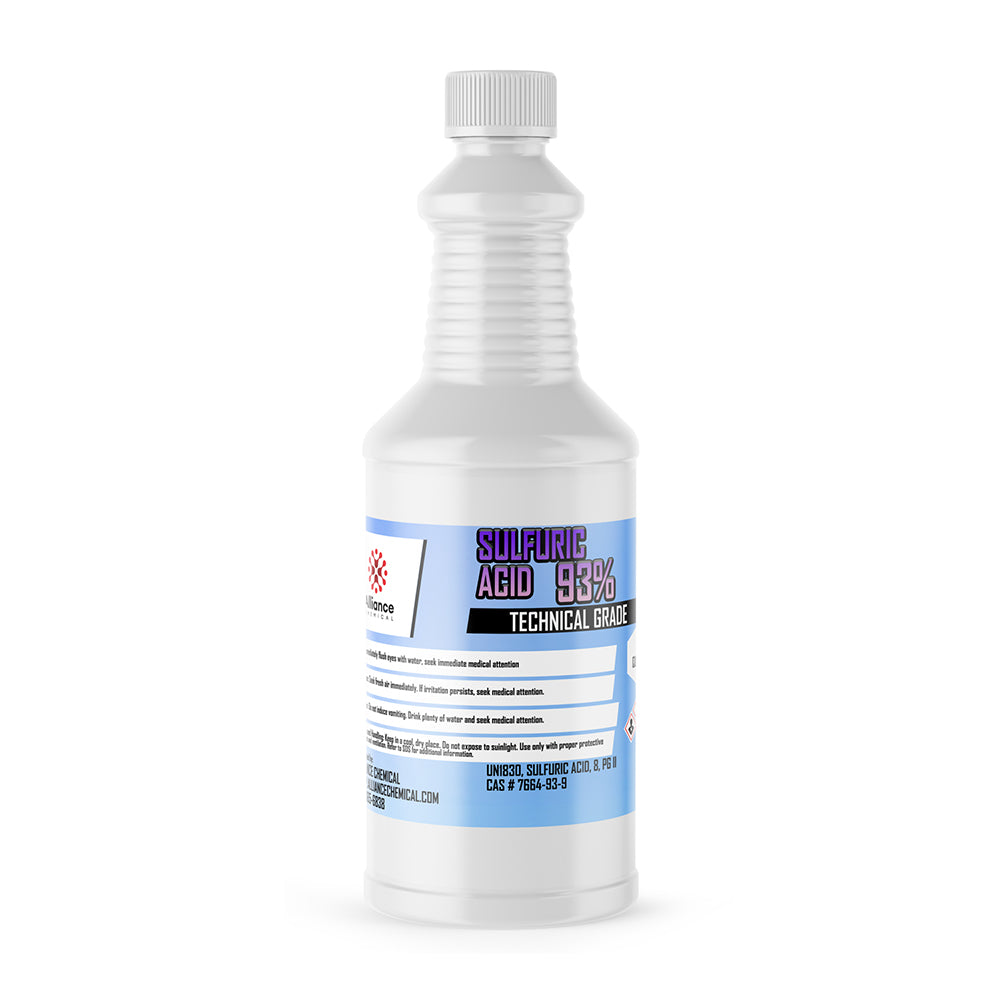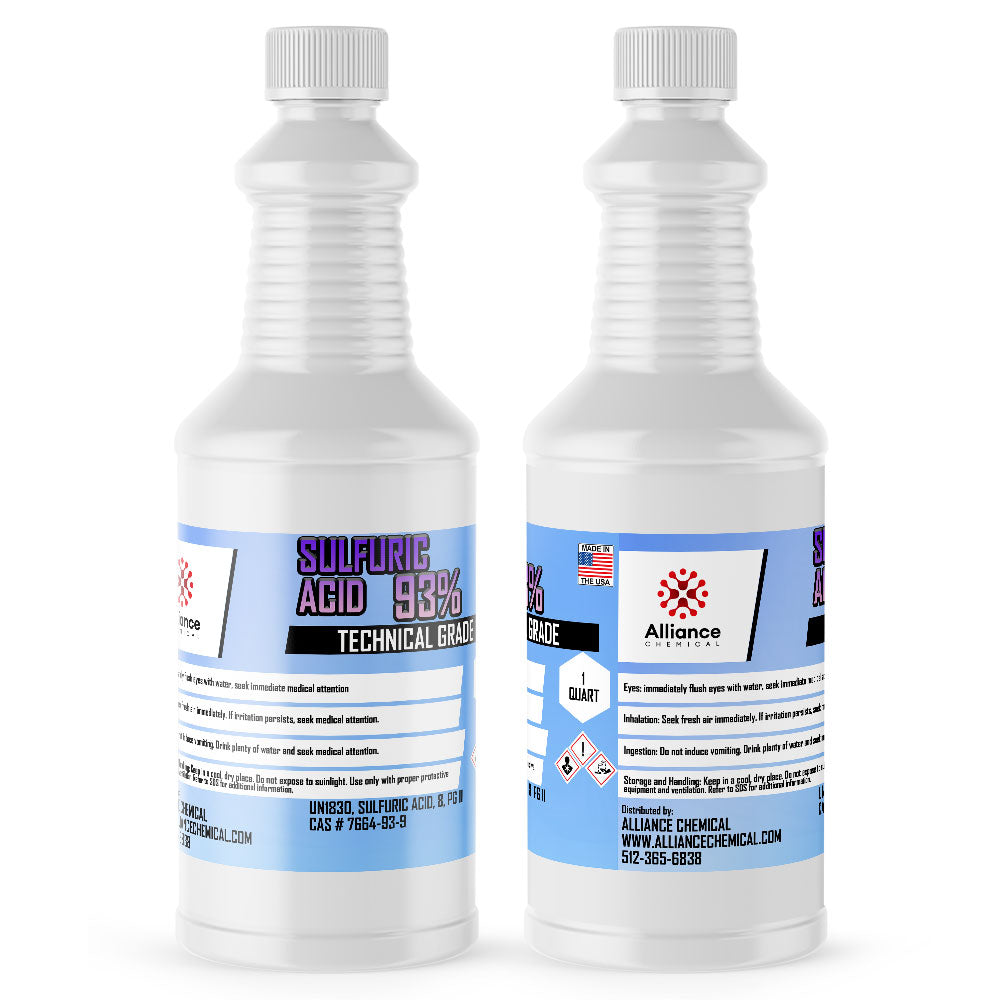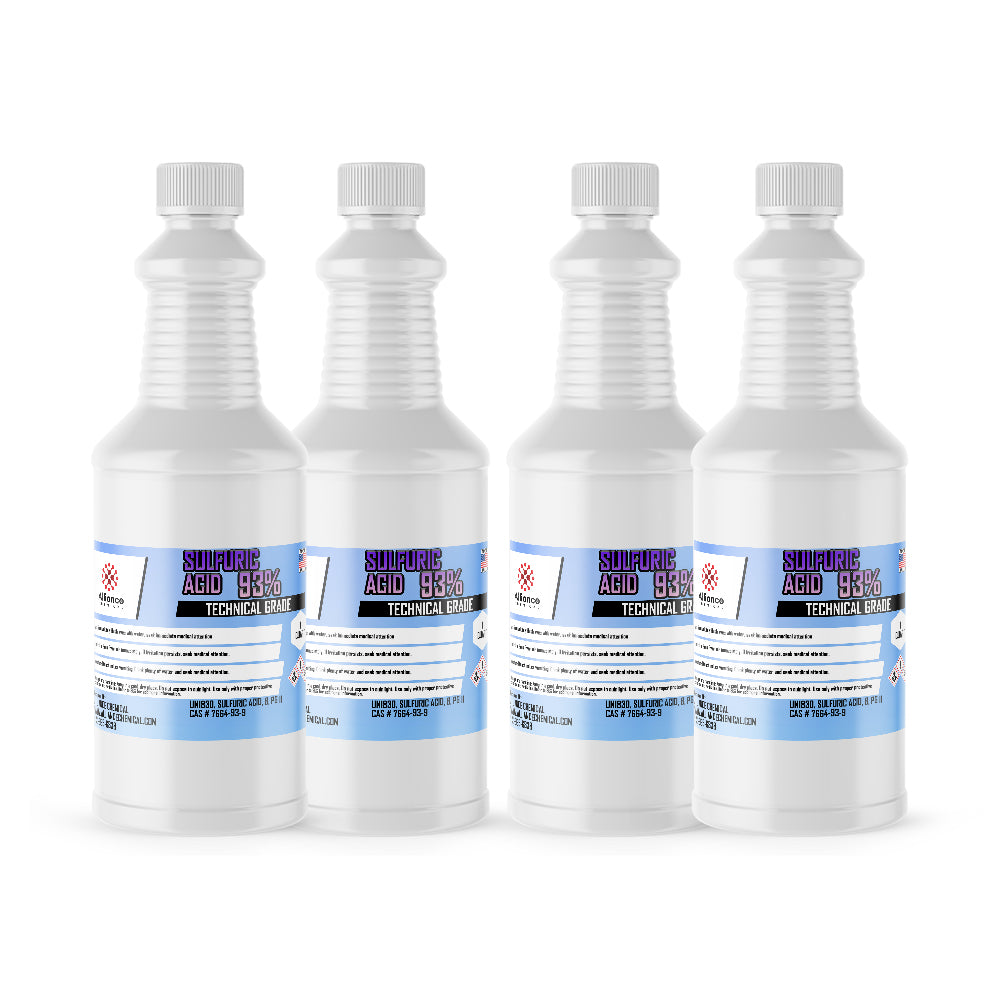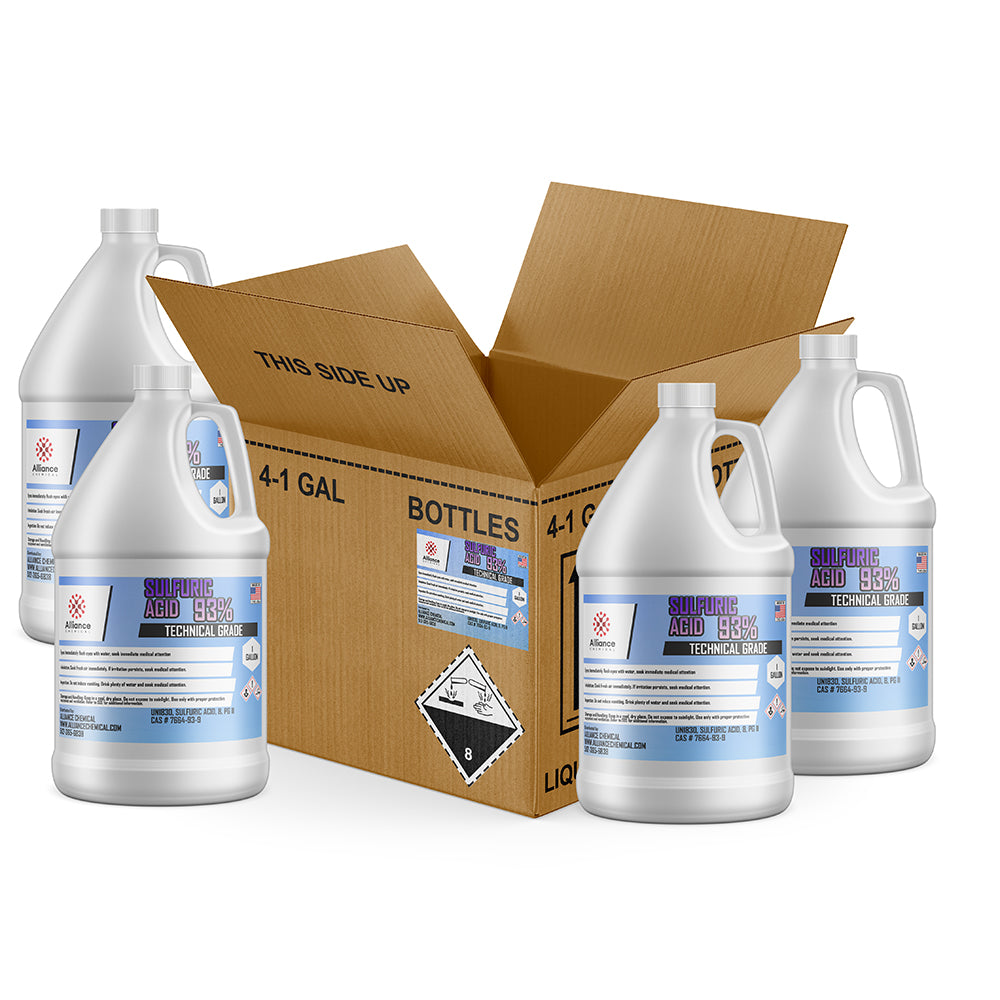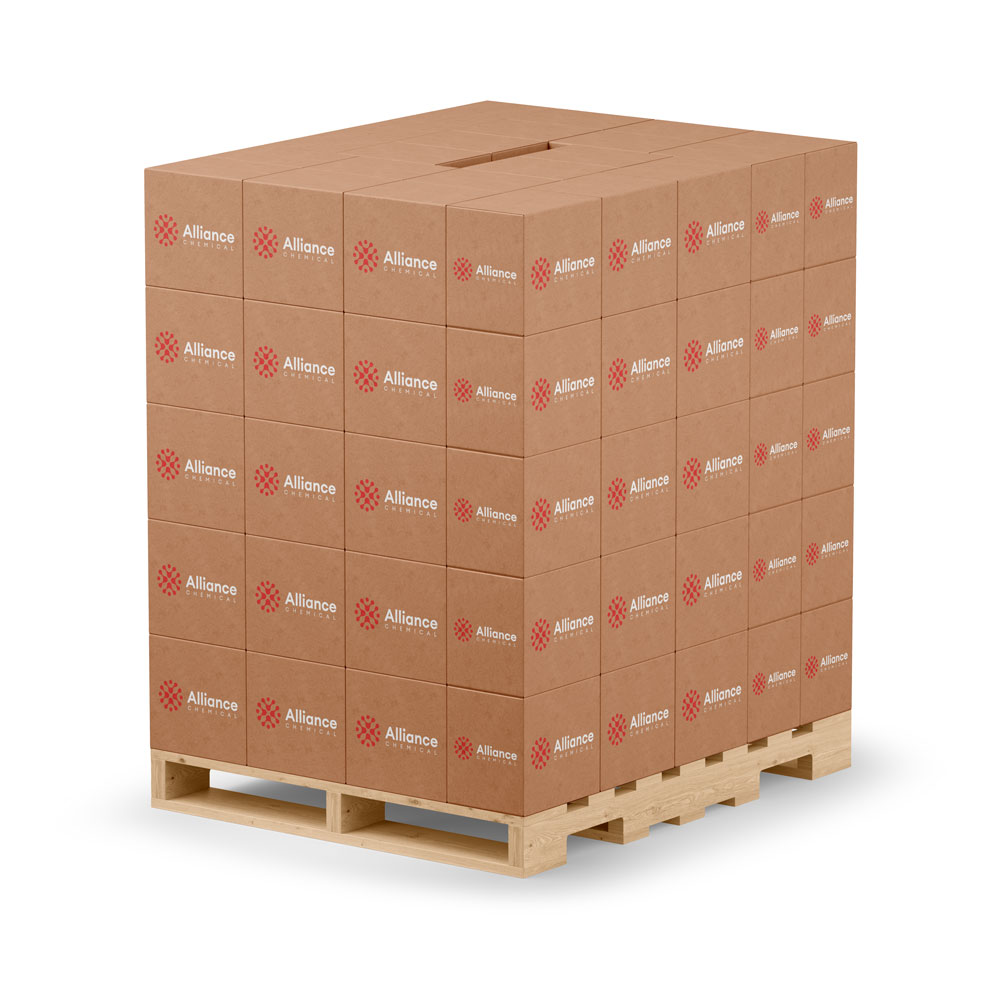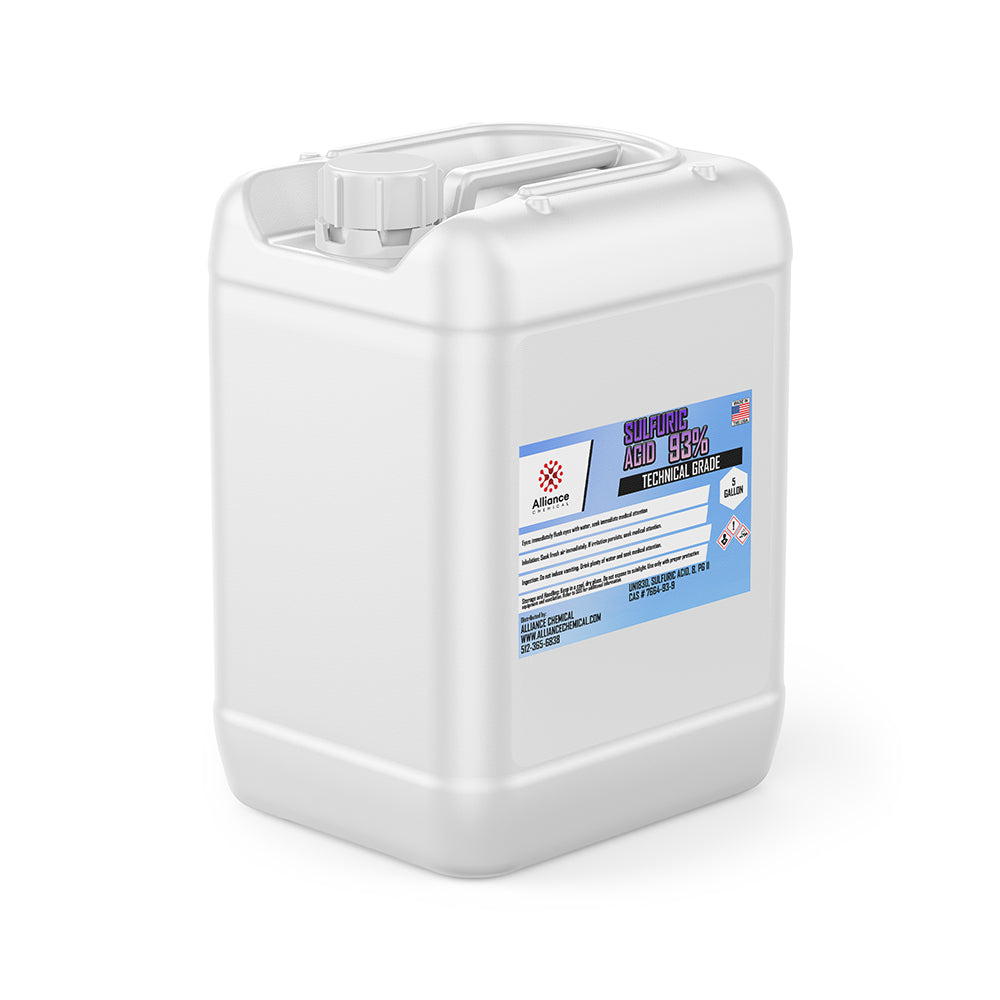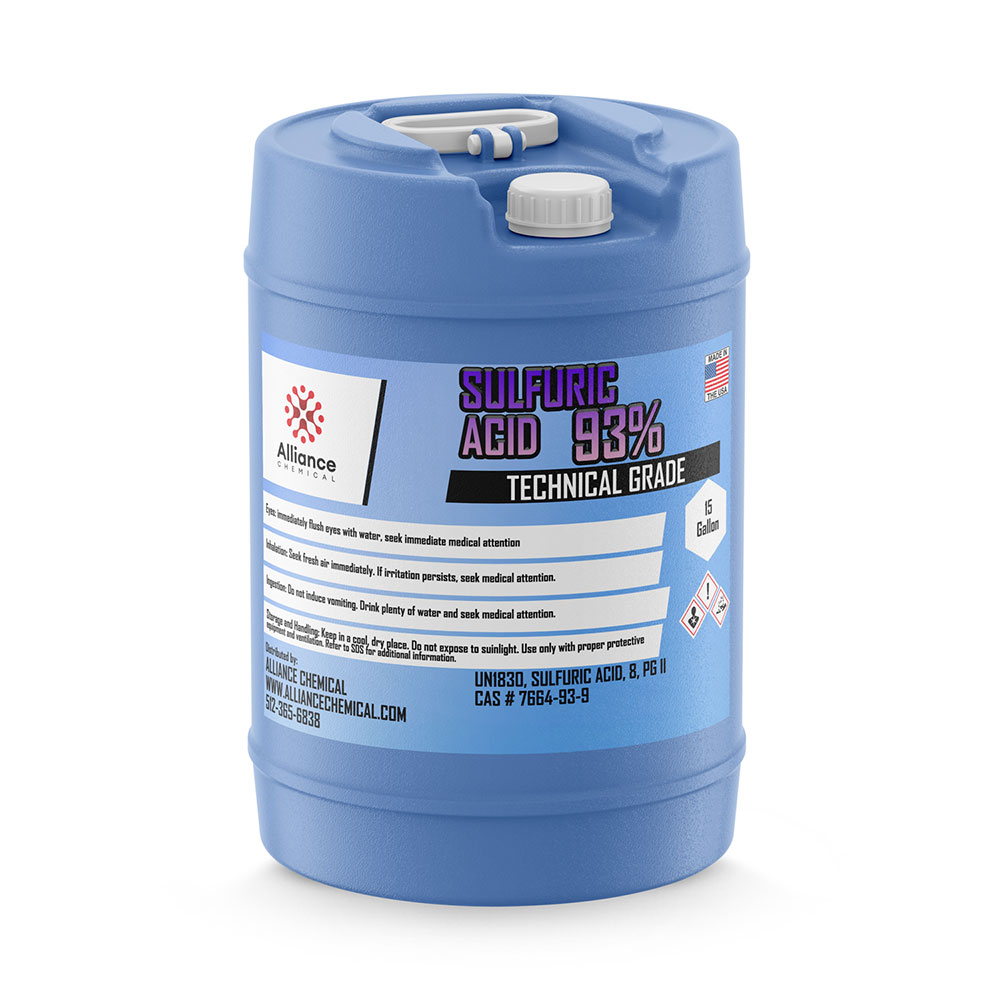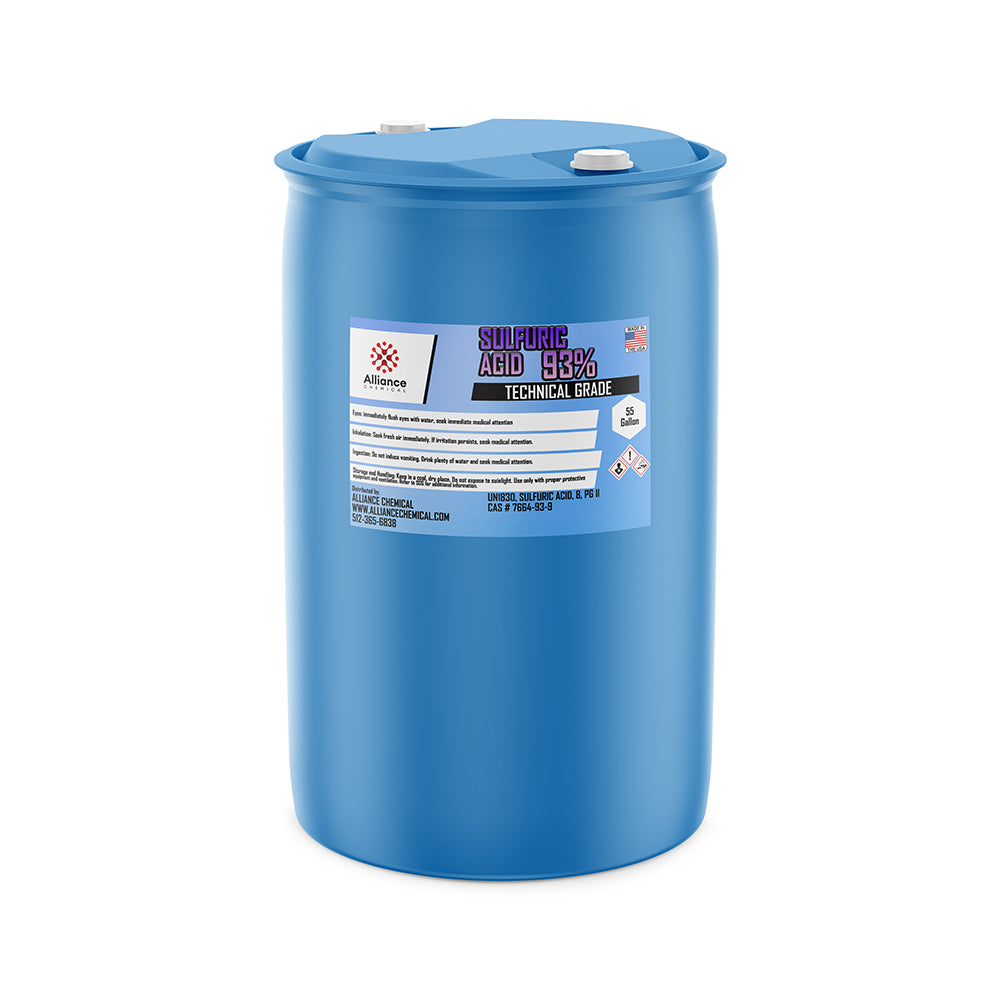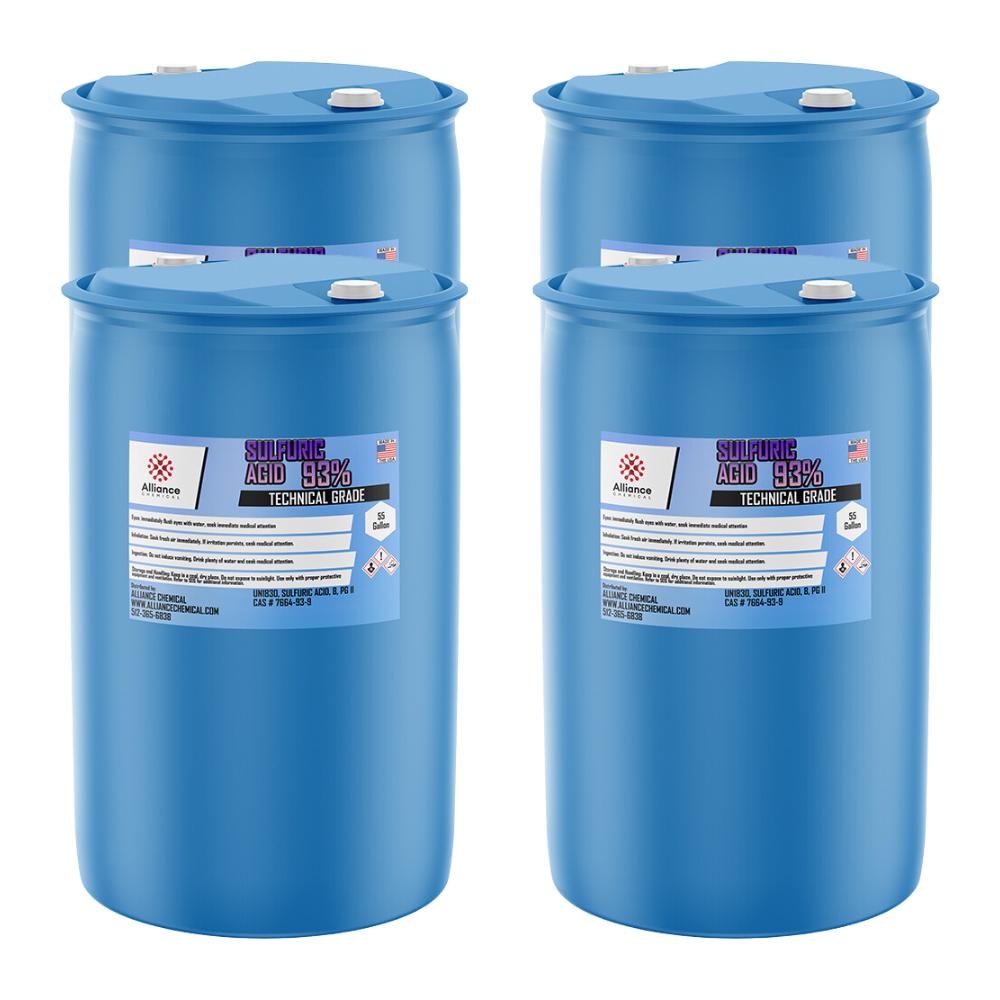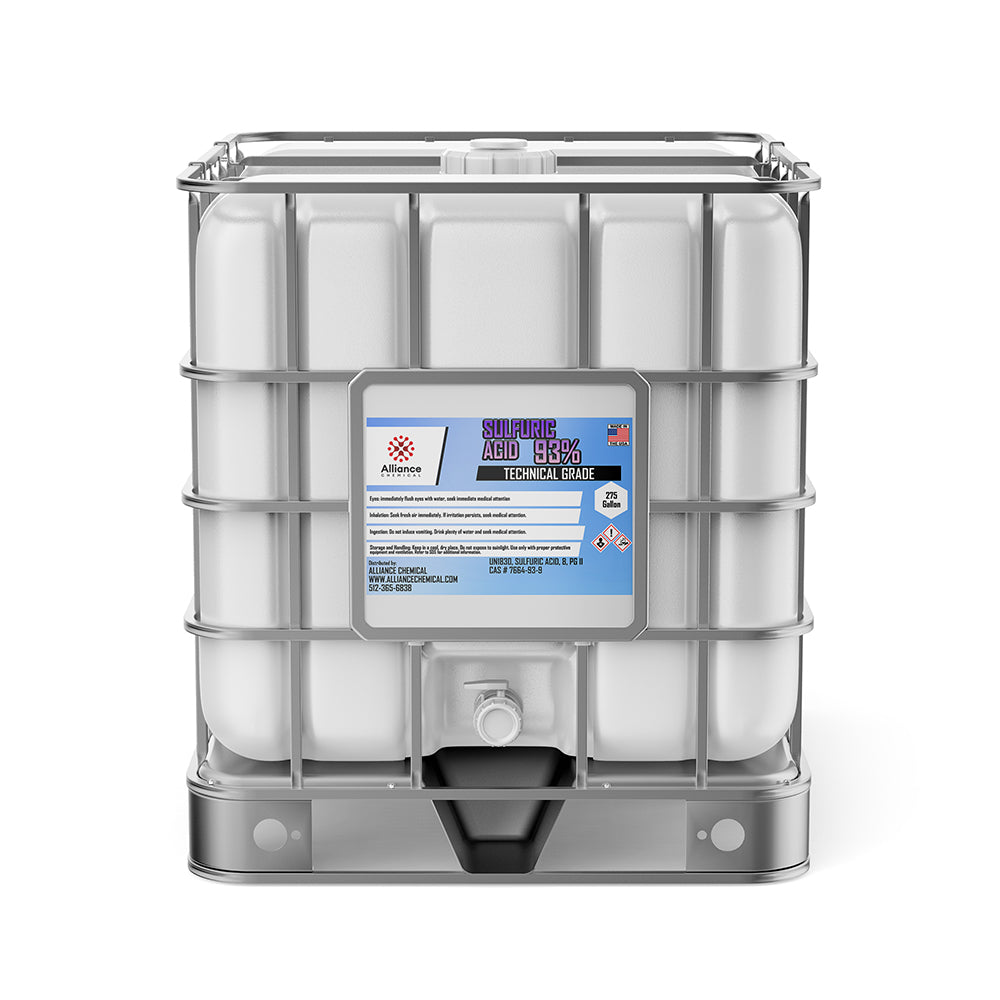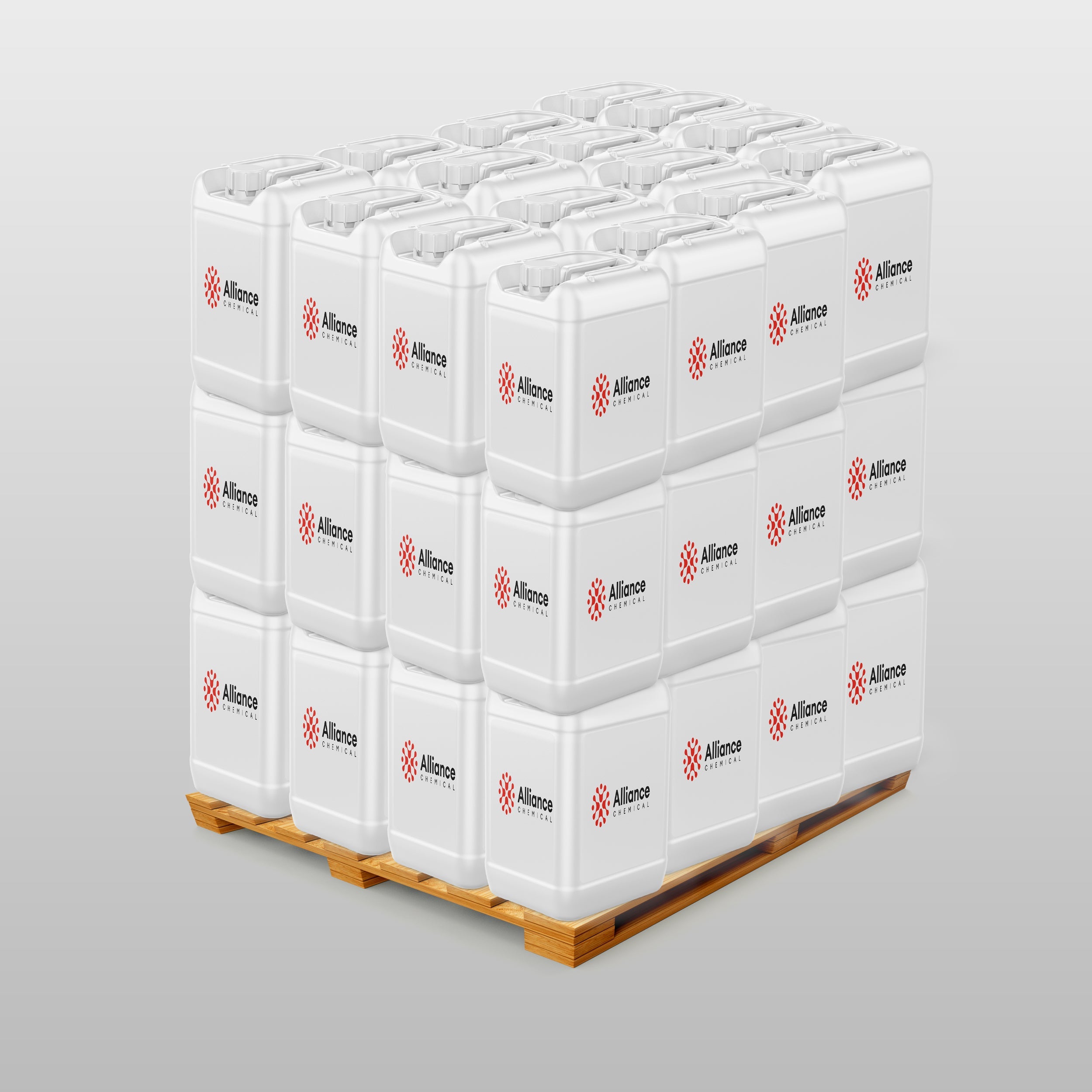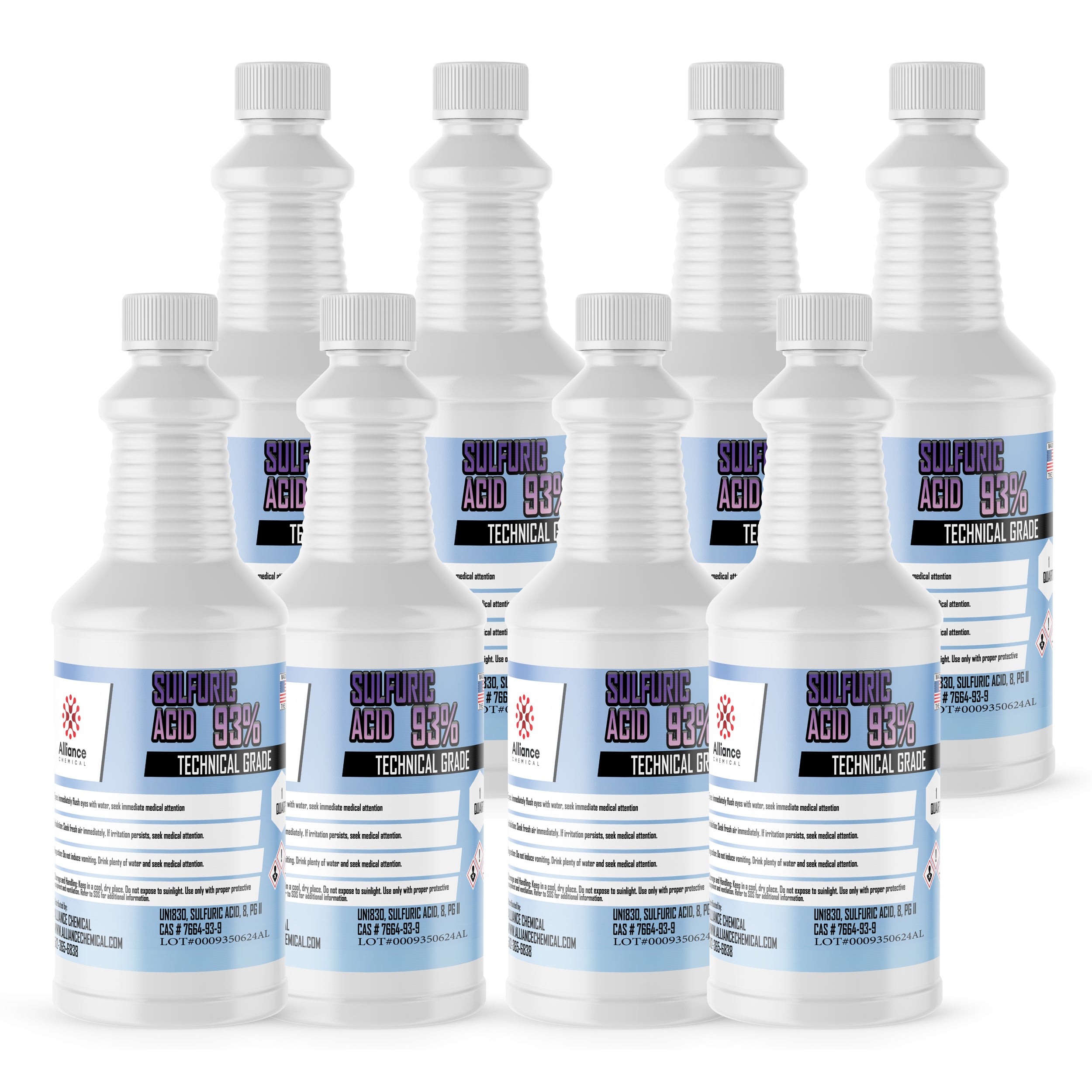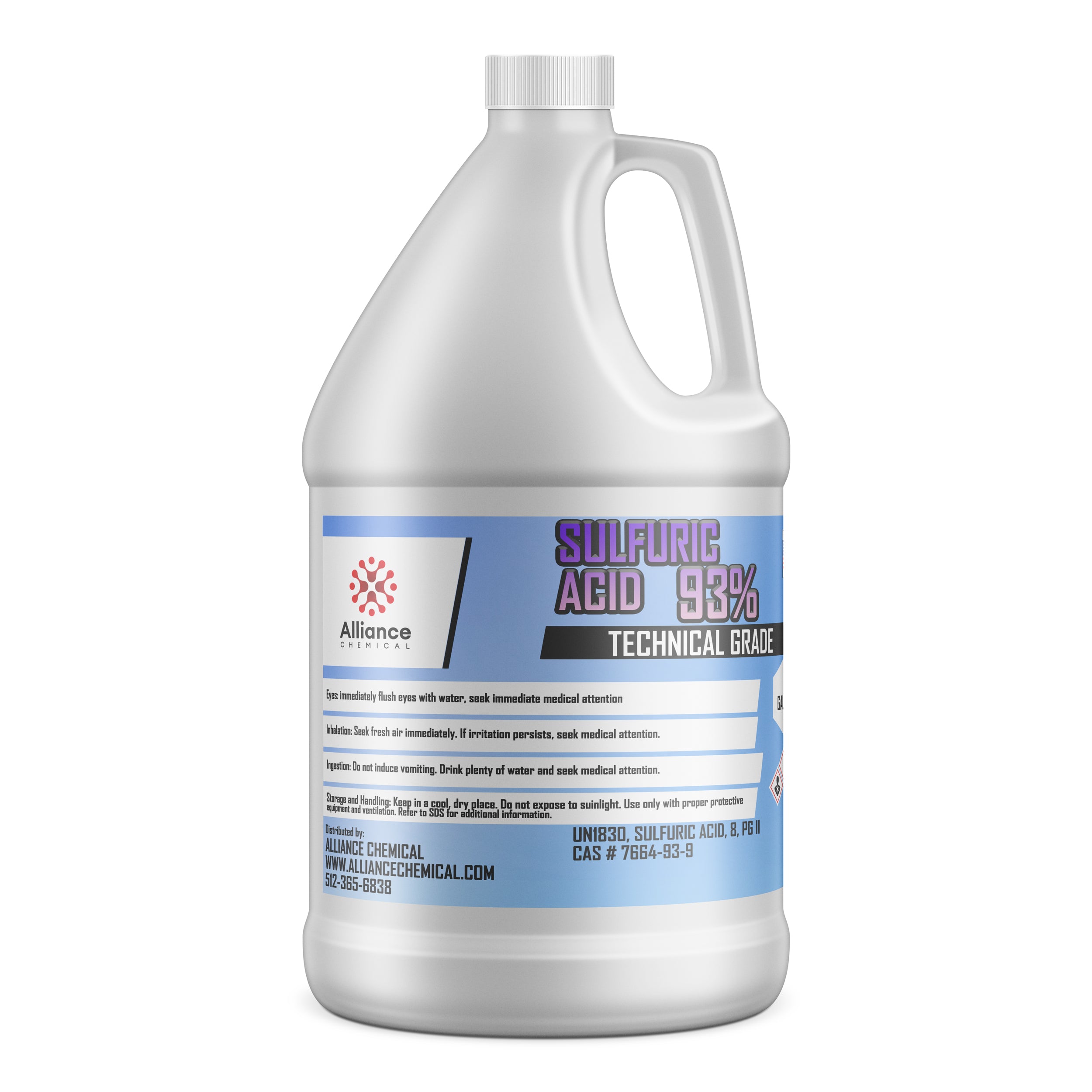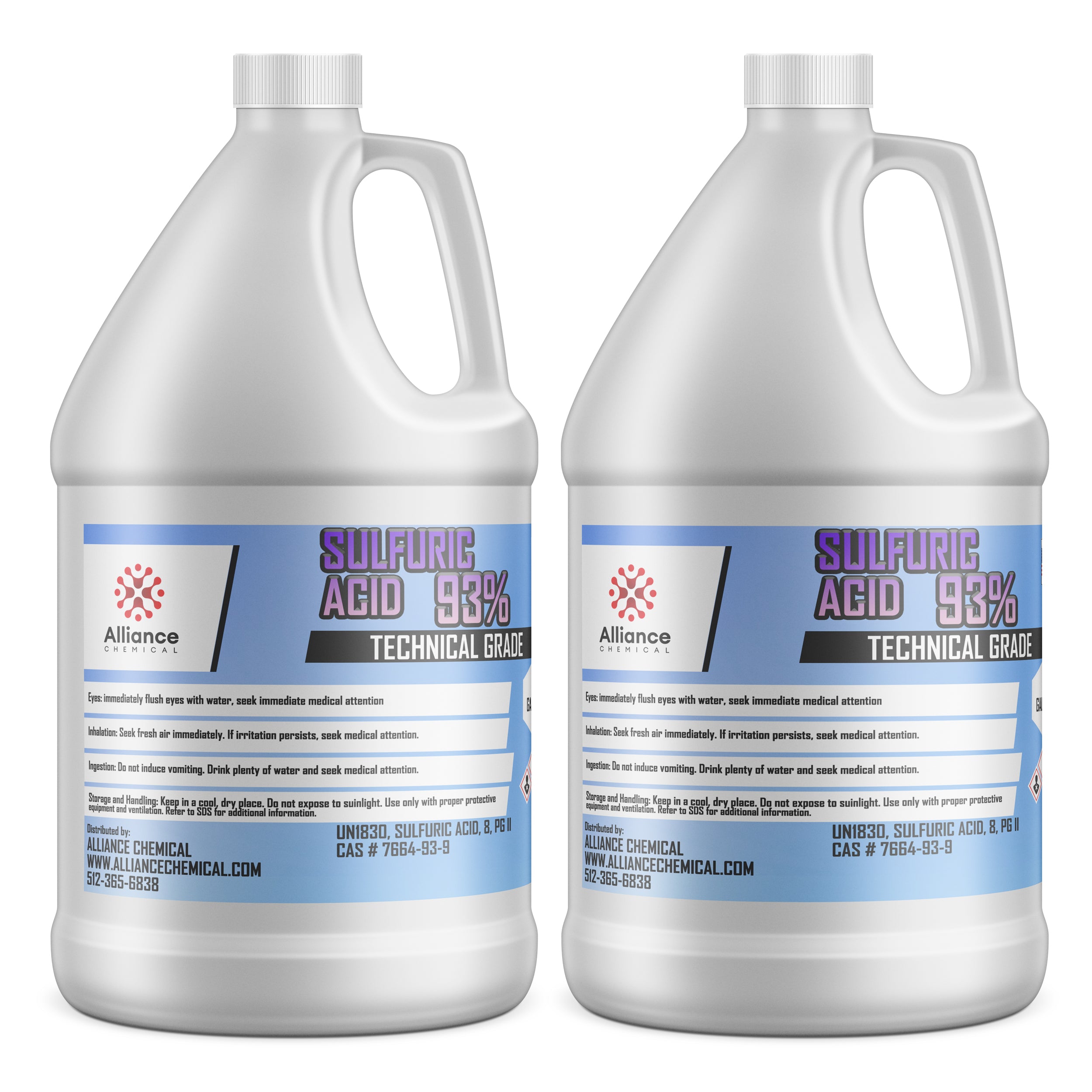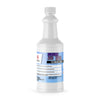Ask a question
Product Overview
Sulfuric Acid 93% Technical Grade (H₂SO₄) is a highly corrosive, inorganic strong acid widely used across industrial and laboratory settings. This technical grade solution provides a typical assay of 96.5% with a concentration range of 93–98%, enabling precise chemical reactions, pH adjustment, and dehydration in synthesis workflows. The product is clear, colorless to slightly yellow, with a density around 1.84 g/mL at 25°C and a refractive index of approximately 1.406, reflecting its concentrated nature. It exhibits exothermic dilution with water and a low vapor pressure, ensuring manageable volatilization under controlled handling conditions. As a strong mineral acid, it is critical to manage corrosion risk, material compatibility, and proper containment in all processes.
Its role as a dehydrating agent and catalyst in various reaction schemes makes it a fundamental chemical for electrolyte formulation, esterification, and pH control in water treatment and industrial synthesis. The product is produced under strict quality controls and is compatible with corrosion-resistant containers such as HDPE or glass, with attention to minimizing contact with metals and organic materials to prevent reactive interactions. This technical grade is suitable for rigorous process environments where concentration accuracy and impurity control are essential for reproducible results.
Key Properties
- Chemical Formula: H₂SO₄
- Molecular Weight: 98.08 g/mol
- Appearance: Clear, colorless to slightly yellow liquid
- Odor: Odorless
- Boiling Point: 337-340°C
- Specific Gravity (20°C): 1.838 (range 1.835–1.841)
- Density (25°C): 1.84 g/mL
- Vapor Pressure (20°C): 0.3 mmHg
- Viscosity (25°C): 1.0 cP
- Refractive Index (20°C): 1.406
- Residue After Ignition (≤): 0.1% (typical 0.05%)
- Chloride (Cl): ≤ 5 ppm (typical 2 ppm)
- Nitrate (NO₃⁻): ≤ 5 ppm (typical 2 ppm)
- Sulfate (SO₄²⁻): ≤ 1000 ppm (typical 500 ppm)
- Arsenic (As): ≤ 0.1 ppm (typical 0.02 ppm)
- Heavy Metals (as Pb): ≤ 0.5 ppm (typical 0.1 ppm)
- Iron (Fe): ≤ 0.2 ppm (typical 0.05 ppm)
- Copper (Cu): ≤ 0.5 ppm (typical 0.1 ppm)
- Manganese (Mn): ≤ 0.5 ppm (typical 0.1 ppm)
- Nickel (Ni): ≤ 0.5 ppm (typical 0.1 ppm)
- Lead (Pb): ≤ 0.5 ppm (typical 0.1 ppm)
- Zinc (Zn): ≤ 0.5 ppm (typical 0.1 ppm)
- Aluminum (Al): ≤ 0.5 ppm (typical 0.1 ppm)
- Chromium (Cr): ≤ 0.5 ppm (typical 0.1 ppm)
- Cobalt (Co): ≤ 0.5 ppm (typical 0.1 ppm)
- Calcium (Ca): ≤ 2 ppm (typical 0.5 ppm)
- Magnesium (Mg): ≤ 2 ppm (typical 0.5 ppm)
- Potassium (K): ≤ 2 ppm (typical 0.5 ppm)
- Sodium (Na): ≤ 2 ppm (typical 0.5 ppm)
- Assay (min–max): 93–98% (typical 96.5%)
- Test Method (assay): Titration with standardized NaOH
Common Applications
- Application Category: Electrolyte in Lead-Acid Batteries – Provides the necessary aqueous electrolyte environment for energy storage in automotive and stationary lead-acid systems, with controlled acidity to optimize charge/discharge efficiency.
- Chemical Synthesis – Key reactant for various chemical production processes, including fertiliser and specialty chemical manufacturing, enabling dehydration and catalyst functions in reaction schemes.
- pH Adjustment – Used to precisely lower pH in water and wastewater treatment, enabling control of precipitation, corrosion management, and process stabilization.
- Dehydrating Agent – Employed to remove water from reactive intermediates in organic synthesis and analytical sample preparation, enhancing reaction rates and selectivity.
- Catalyst in Esterification Reactions – Facilitates ester formation in pharmaceutical and fine chemical production, enabling higher yields under controlled temperature conditions.
- Industrial Processing – Utilized in metal finishing, mineral processing, and chemical neutralization steps where strong acidity is required with stringent impurity controls.
- Acid Strength Reference Standard – Used in calibration and standardization procedures for acid-base assays and titration methods in laboratories.
Safety Precautions
Handle with appropriate PPE, including chemical splash goggles, acid-resistant gloves, and chemical-resistant clothing. Store in a cool, dry, well-ventilated area in corrosion-resistant containers (HDPE or glass), away from incompatible materials and metals, to prevent violent reactions. Ensure spill containment and proper ventilation during handling to minimize exposure and inhalation risk. Maintain compatibility with dedicated dedicated acid cabinets and secondary containment to prevent leaks and environmental release.
Maintain exposure controls according to SDS guidelines and applicable regulations. In case of exposure, follow emergency procedures: flush skin or eyes with water for at least 15 minutes, remove contaminated clothing, seek medical attention for burns or irritation, and contact emergency services for inhalation or ingestion incidents. Transport and emergency planning should reference UN 1830 (Sulfuric acid), Class 8, PG II, and comply with relevant transport and workplace safety standards (OSHA, EPA, local regulations).
Benefits
✔ High Concentration Integrity – 93–98% assay range with typical 96.5% supports precise stoichiometry and reproducible results in industrial processes.
✔ Quality with Impurity Controls – Low levels of chlorides, nitrates, sulfates, and trace metals ensure compatibility with sensitive applications and reduce contamination risk.
✔ Material Compatibility – Compatibility with HDPE and glass due to corrosion considerations, enabling safe storage and transport in standard industrial systems.
✔ Trustworthy Documentation – Documented TDS, assay methodologies, and compliance with ASTM/ACS/USP-relevant parameters reinforce traceability and regulatory alignment.
| Property | Value |
|---|---|
| Molecular Weight | 98.08 g/mol g/mol |
| Formula | H2SO4 |
| Assay | 93% |
| Grade | Technical |
| Flash Point | null |
| Form | Liquid |
| Solubility | High water solubility, miscible with polar solvents |
| Appearance | Oily, clear liquid |
| Melting Point | 10°C °C |
| Boiling Point | 337°C °C |
| Specific Gravity | 1.835 |
| Industry | Industrial, Chemical Processing, Wastewater Treatment |
ELX-2ZO-AXI
$26.50
Unit price
Compare Products
| Price |
|---|
| SKU |
| Rating |
| Discount |
| Vendor |
| Tags |
| Weight |
| Stock |
| Short Description |

